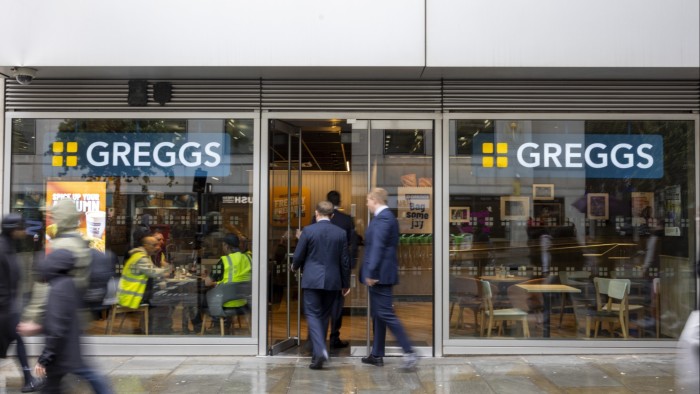
Disclosure: This article does not represent investment advice. The content and materials featured on this page are for educational purposes only.
Emerging blockchain projects like Rexas Finance, Stellar, and Mantle Network offer significant potential for transforming key industries, making them noteworthy considerations for investors.
For savvy investors, the world of cryptocurrencies presents unmatched chances to increase their fortune. Among the most likely candidates are Mantle Network (MNT), Stellar (XLM), and Rexas Finance (RXS). These initiatives are poised to transform sectors, including decentralized finance (DeFi), real estate tokenization, and cross-border payments, and offer excellent development potential. Let’s explore what qualifies these initiatives for your financial outlay.
Rexas Finance (RXS): transforming DeFi and real estate tokenization
Rexas Finance (RXS) is a blockchain-based tool that can change the DeFi landscape and tokenize real estate and other tangible assets. Using modern technology, RXS allows clients to tokenize assets and access open, rapid, safe financial services. Given the estimated $280 trillion global real estate market, Rexas Finance’s approach could create unheard-of liquidity and possibilities for institutional and regular investors. At stage 11 of its presale, Rexas Finance offers tokens for $0.175. The presale has been quite successful, with over $33.9 million and over 384.8 million tokens sold. The presale stage shot 483% from stage 1 at $0.03. Such achievements show investors’s growing trust in the idea and possibilities of RXS.
Rexas Finance’s reputation is further enhanced by CertiK’s passing of a thorough audit, which confirms its position as a safe investment. The platform distinguishes itself in the crypto market by tokenizing actual estate assets. As adoption rises, early investors could see their initial investment multiply greatly, making RXS a must-have for their portfolios.
Stellar (XLM): transforming global payment systems
Stellar’s goal of offering cheap, rapid cross-border transactions is well-known. Unlike conventional systems hampered by high fees and slow procedures, Stellar uses decentralized ledger technology to link people to effective financial systems. Stellar’s native cryptocurrency, XLM, is essential for lowering transaction costs and guaranteeing flawless financial transfers. Stellar provides retail investors with accessibility and reasonably priced live pricing at $0.36 as of writing. Apart from its payment capacity, Stellar is a decentralized exchange and marketplace. Its built-in order book maintains ownership of Stellar assets, letting users control buy and sell orders and choose preferred assets for settlements. Stellar distinguishes itself by stressing the need to empower people instead of institutions. By closing financial gaps, the platform guarantees that underprivileged groups can transmit money worldwide cheaply. Given the rising need for quick payment solutions, Stellar is expected to develop exponentially; hence, XLM is a great candidate for transforming small investments into significant returns.
Mantle Network (MNT): scaling Ethereum with innovative technology
The subsequent development of Ethereum scalability is embodied in MNT, Mantle Network. This Layer 2 (L2) technology stack, the first key component of the Mantle Ecosystem, seeks to improve Ethereum’s capabilities while keeping compatibility with the Ethereum Virtual Machine (EVM). Mantle’s modular architecture breaks transaction execution, data availability, and transaction finality into discrete components. This framework guarantees that the platform remains at the forefront of blockchain developments and allows individual improvements.
Mantle Network is positioned to draw developers and investors searching for scalable, reasonably priced solutions for decentralized apps (dApps) with a live pricing of $1.22 as of writing. Its emphasis on scalability and modularity guarantees it stays a necessary instrument in the larger Ethereum ecosystem. Mantle’s creative method of scaling makes a substantial long-term investment for investors.
Making $550 into $11,000: How Should You Invest Your Money
Arrange your money deliberately among these three up-and-coming ventures to optimize rewards. Start with Rexas Finance (RXS), funding this creative project with $300. With its $0.175 presale pricing, you can get about 1,714 tokens. With its emphasis on real estate tokenization and DeFi, RXS might reach $3.00 per token, producing nearly $5,100. Then, using Stellar’s reasonably priced $0.36, invest $150 in XLM. You would then have about 416 XLM tokens. A jump to $5.00 per token can turn your capital into $2,080 if Stellar keeps transforming cross-border payments. At last, provide Mantle Network $100; bought about 82 tokens at $1.22 apiece. Mantle’s sophisticated Ethereum scaling solutions might drive its price to $50.00, increasing your investment to $4,101. By spreading your money among various initiatives, you may leverage their unique qualities and start along the road to turn $550 into $11,000.
Conclusion
Not only are Rexas Finance, Stellar, and Mantle Network coins revolutionary technologies that are changing sectors and addressing practical issues. With a focus on DeFi, real estate tokenization, cross-border payments, and Ethereum scalability, these projects are poised to yield remarkable rewards. As these projects take off, investing $550 among five outstanding cryptocurrencies could produce an impressive $11,000 or more. Still, due care and risk analysis are as vital as any investment. Join these creative sites to set yourself up for significant income expansion.
To learn more about RXS, visit the official website, read the whitepaper, and join the community on X and Telegram. Or win $1 Million Giveaway
Disclosure: This content is provided by a third party. crypto.news does not endorse any product mentioned on this page. Users must do their own research before taking any actions related to the company.
























+ There are no comments
Add yours